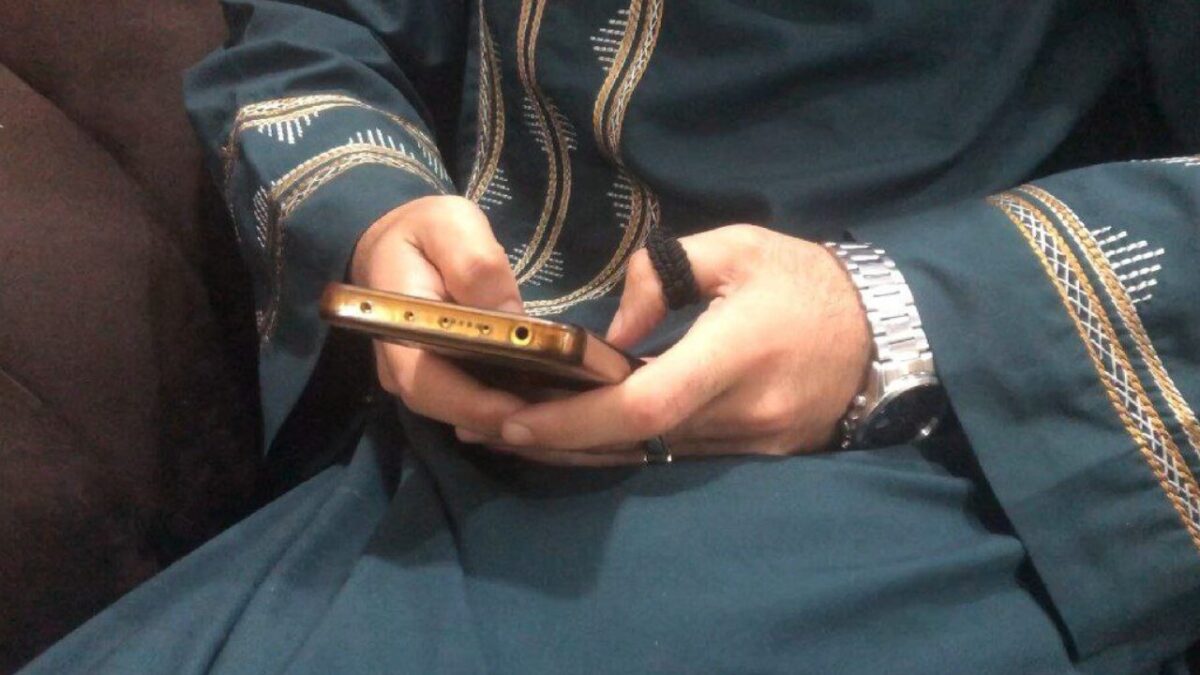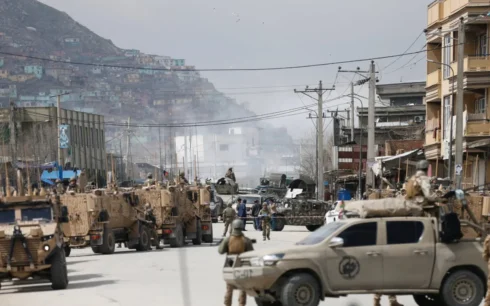Human trafficking networks in Afghanistan are exploiting social media platforms to lure individuals into illegal migration, preying on vulnerable populations with deceptive promises and curated portrayals of life abroad.
A field study by Amu TV conducted across eight Afghan provinces sheds light on the sophisticated methods traffickers use to manipulate aspiring migrants, particularly through platforms like Facebook, Telegram, and WhatsApp.
The study interviewed 40 participants, all of whom were either victims of illegal migration or witnesses to such cases. Among the participants, 33 reported being targeted by traffickers through social media, while 12 had directly fallen victim to their schemes.
In the past year alone, 11 participants said they had witnessed new cases of illegal migration facilitated by social media networks.
Key findings:
65% of participants said traffickers used misleading promises of safe travel, better job opportunities, lower costs, and expedited migration to lure individuals.
20% of participants cited the use of idealized images and videos of life abroad as a major factor influencing people’s decisions.
12.5% expressed uncertainty about social media’s role, while 2.5% denied its involvement.
False promises and digital manipulation
The study highlighted how traffickers exploit social media to create an illusion of opportunity. Through advertisements, private groups, and direct messages, they offer enticing promises:
Safe routes and guaranteed success: Traffickers assure potential migrants that their journey will be secure and without obstacles.
Low costs: They claim the process is affordable, often misleading victims about hidden expenses.
Employment opportunities: Promises of stable jobs and comfortable living conditions abroad are central to their pitch.
These promises are often accompanied by curated videos and photos showcasing a glamorous life in foreign countries—images far removed from the grim realities awaiting most illegal migrants.
Voices from the victims
Detailed accounts from victims provide a sobering glimpse into the harsh realities of illegal migration. These stories reveal the deep emotional and physical toll, as well as the pervasive role of social media in facilitating the process.
Reza’s Journey: A dream turned nightmare
Reza, who embarked on an illegal migration journey 11 years ago, recounted how social media posts and encouragement from friends led him to leave his studies behind.
“I was in school, dreaming of becoming a doctor,” he said. “But my friends kept sending me photos on Facebook of beautiful houses, happy people, and opportunities abroad. They said life was so much better there.”
Reza connected with a trafficker through WhatsApp. The trafficker assured him that everything would be taken care of: food, transport, and accommodation. But when the journey began, Reza realized he had been deceived.
“The route was dangerous. We walked for days in the desert without food or water. When we reached the border, we were held in a camp where they demanded more money. If you couldn’t pay, they left you behind. Many of us were beaten; some didn’t survive.”
Roman’s ordeal: Torture along the way
Roman described how traffickers contacted him through WhatsApp, promising a quick and comfortable journey to Iran. The reality was far different.
“They sent videos of clean apartments and parks, saying this would be my life,” Roman recalled. “But the journey was hell. We were packed into a truck like animals, with no air to breathe. When we complained, they beat us. Later, they locked us in a room, saying we owed them more money. Those who couldn’t pay were tortured.”
Roman’s journey left him physically scarred and emotionally devastated. “I trusted their promises, but they treated us like cattle. I wouldn’t wish this on my worst enemy.”
Qand Agha: Promises that turned to dust
Qand Agha was lured by traffickers who shared videos of luxurious accommodations and easy transit on Facebook.
“They told me everything was prepared: a clean bed, three meals a day, and safe transport. But when I arrived, it was all lies,” he said. “We were crammed into a tiny room with 20 others. There was no food, no water. They abandoned us halfway, and we had to fend for ourselves.”
Traffickers rely on specific platforms to expand their operations and maintain contact with victims:
Facebook and Instagram: Used to share advertisements and photos of an idealized life abroad.
Telegram and Imo: Host private groups where traffickers coordinate routes and provide updates to victims.
WhatsApp: Used for direct communication, including sharing voice messages, videos, and instructions.
Participants shared harrowing details of how traffickers use these platforms to manipulate their victims. One victim described receiving a video of a luxurious apartment in Europe, accompanied by a message: “This will be your life if you join us.”
Another shared how traffickers used voice messages in WhatsApp groups to convince migrants that the journey was safe and well-organized. “They kept saying, ‘Trust us. Everything is ready,’” the victim said. “But once we started, there was no turning back.”
The broader impact of human trafficking
Illegal migration and human trafficking have entrenched themselves in Afghanistan, preying on the country’s economic instability and lack of opportunities.
Young people, in particular, are disproportionately affected, lured by promises of a better life only to face exploitation, physical abuse, and financial ruin.
According to migration experts, eradicating human trafficking will require a multifaceted approach:
Public awareness campaigns to educate people about the risks.
Strengthened anti-trafficking laws and institutions.
Expanding economic opportunities to reduce the allure of migration.
“Traffickers exploit desperation,” said one migration expert. “Unless we address poverty and unemployment, these networks will continue to thrive.”
While the stories of victims are grim, there are steps being taken to combat the crisis. Advocacy groups are working to raise awareness about the dangers of illegal migration, and some survivors are speaking out to warn others.
“Communities must come together to educate young people,” said an advocate. “At the same time, we need stronger institutions to prevent trafficking and support those who have fallen victim.”
A call for change
The study emphasizes the urgent need for systemic action to address human trafficking in Afghanistan. It highlights the dual role of social media as both a tool for exploitation and a potential avenue for intervention.
By raising awareness, enforcing stricter laws, and addressing the root causes of migration, Afghanistan can begin to dismantle the networks preying on its citizens.
For now, however, traffickers continue to exploit digital platforms, luring individuals into perilous journeys with promises that rarely align with reality. The deceptive allure of social media leaves a trail of broken dreams, financial loss, and untold suffering.





